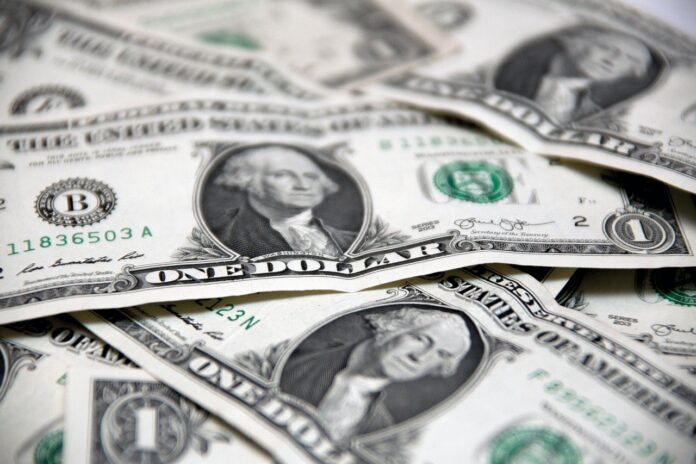The foreign exchange market is highly liquid, with a trading volume worth trillions of dollars. To trade successfully, you need to understand the traded currencies and choose a currency pair that best suits your trading style, time zone, and experience level. A currency pair comprises two different currencies – the base currency and the quote currency. However, some currencies are widely traded due to some favourable characteristics they possess. Keep reading to learn the six most-traded currencies globally as well as their characteristics.
Top 6 Most Traded Currencies in the World
The US Dollar (USD)
The US dollar is the most traded currency in the world for many reasons. As the world’s strongest reserve currency, the US dollar is widely traded against most currencies in the world, including multiple financial asset classes – metals, crypto, oil, stocks, etc. In many instances, the US dollar acts as an alternative means of payment, and some countries even peg their currencies to it.
In addition, the United States is the world’s largest economy, which means several financial institutions and banks trade the US dollar daily. Therefore, the forex currency pairs that consist of the US dollar are called major currency pairs because the high trading volume of the US dollar makes these pairs highly liquid. Retail forex traders often trade these major currency pairs on forex brokers like Oanda because the high liquidity creates a favourable trading environment. The US dollar is highly influenced by numerous news, economic reports, and fundamental data such as gross domestic product and unemployment data.
The Euro (EUR)
The euro is the second most traded currency in the world. It was introduced in 1999 and currently serves as the official currency of 19 members of the European Union. Due to this widespread acceptance, the euro is the second-largest reserve currency in the world. This large trading volume creates and sustains a highly liquid trading environment for every currency paired with the euro. The euro currently acts as a benchmark for many countries that peg their currencies to it.
The value or price of the euro largely depends on the eurozone’s economy. The euro is influenced by news and economic data from member countries – especially major states like Germany, France, and Italy.
The Japanese Yen (JPY)
The Japanese yen is the third most traded currency in the world and the most traded Asian currency. Japan’s economy is a developed free-market economy largely driven by exports. The Japanese yen is known as a safe-haven currency. In times of crisis or turmoil (also known as risk-off environments), investors prefer to invest in the Japanese yen due to its stability and current account surplus (since it exports more than it imports). This helps them offset the risks incurred by investing in other foreign currencies and assets.
The bank of Japan constantly seeks to safeguard the JPY by investing in bonds and using monetary policies like zero interest rates. The forex currency pairs containing the JPY are highly liquid and volatile. The Japanese yen is influenced by many factors, including monetary policies and Japanese economic data.
The British Pound (GBP)
The British pound is the official currency of the United Kingdom, and it is the fourth most traded currency. While the UK was a member of the European Union, the pound remained its official currency – this ensured that the interest rate and monetary policies of the United Kingdom were controlled domestically. The value of the British pound is largely tied to the economic and political atmosphere of the UK. The pound tends to strengthen in times of economic boom and stability but weakens in times of economic crises within the UK. Many countries in the world currently peg their currencies to the pound. With the large trading volumes of the pound across several financial institutions, it is a highly liquid currency.
The Australian Dollar (AUD)
The Australian dollar is the official currency of Australia, and its pairing with the dollar forms the AUD/USD pair – one of the most traded pairs in the world. The Australian dollar is a commodity currency because its value is closely tied to the value of the major Australian exports – iron ore, gold, coal, copper, aluminium, and agricultural products.
The Australian dollar strengthens as the demand for these commodities increases, and vice versa.
The Canadian Dollar (CAD)
The Canadian economy largely exports crude oil and refined petroleum. As a result, the Canadian dollar is a commodity currency because its strength is influenced by the price of crude oil – which depends on the forces of demand and supply for oil.
The Canadian dollar reacts to fluctuations in oil prices and other factors affecting the Canadian economy; exchange rate, unemployment rate, manufacturing and export data, etc.
These currency pairs are highly traded because their liquidity and volatility present numerous trading opportunities for forex traders. The strength and development of their economies attract investors and currency traders globally.







